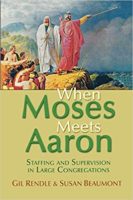
An energy buzz often appears at the start of a new program year. Staff return from vacation feeling rested and renewed. Small groups re-form with fresh curriculum. Committees connect with dreams for a new season. If we aren’t intentional about how we align this energy, it won’t last. Buzz dissipates. Unaligned, we retreat eventually to the former status quo.
Alignment and Leadership
Most of us know that when a vehicle gets out of alignment it runs poorly. It pulls to one side, or shakes. The driver struggles to keep the car in the center of the lane. The vehicle uses too much fuel, and the tires wear out prematurely. So at regular intervals, we take our cars to get them serviced. Aligning the wheels ensures a smooth, efficient ride.
Congregations can get out of alignment too. Leaders have slightly different visions of where things are headed and different pathways in mind for getting there. Personal agendas supersede shared vision. There’s no shared plan for evaluating progress. The pastor grips the wheel too hard, trying to keep everyone moving in the same direction. Leaders compete for resources. Exhausted by the effort, everyone simply gives up on change and returns to old familiar ways.
It’s time for an alignment—but how do we manage it?
Alignment requires strategic leadership. People often hear the word “strategic” and think it means creating a long-term strategic plan—a process that can overwhelm. There are times and seasons for such plans, but I am advocating for intentional daily strategic leadership that does not call for a formal long-range plan.
A strategic leader thinks, acts, and influences people to sustain the mission of the congregation over time. This way of crafting strategy is more a process of discovery than decision-making. It stresses iterative learning over choosing and voting.
Becoming a Strategic Leader
Richard Hughes and Katherine Colarelli Beatty, in Becoming a Strategic Leader, identify five elements for developing strategic leadership. Any leader can adopt these elements in any part of the organization where greater strategic alignment is desired.
- Assess where you are. You can’t align people behind a vision of the future without first clarifying the current situation. Collect and make sense of relevant information about the present status.
- Understand who you are and where you want to go. This is where you engage the aspirational part of your leadership. Create a clear vision of the future with the dream fully realized. Get clarity about core values of the congregation that support this dream.
- Name key approaches for getting there. Most of your dreams can be approached in multiple ways. You don’t have unlimited resources. Focus is important. Choose the approach(es) you want to invest in—and excel at—to advance your mission.
- Make the journey. Determine tactical approaches, partnerships to explore, resources to develop, and lessons to be learned.
- Check your progress. Get clear about the indicators you will use to evaluate progress. Adjust as you learn what is effective and what is not working. Repeat the cycle.
A Practical Application
Let’s apply the five elements to a practical example. Imagine that you would like to focus with your leaders on developing volunteerism. Think about how you might exert strategic leadership in this area. Following is one possible approach. You will need to design an approach that is appropriate for your context.
Assessing where we are. Only 30% of members are actively volunteering in the congregation. The total number of volunteer hours has decreased by 10% in each of the last four years. People regularly complain that they would like to volunteer but don’t know where and how to serve. Current leaders complain that they can’t find people to serve. New members report that they don’t want to sit on a committee to be a volunteer.
Understand who we are and where we want to go. We are a congregation with big, bold dreams for the future. We imagine:
- a future where volunteers serve eagerly
- a bank of equipped volunteers, ready to lead us in our dreams
- intentionality about placing the right people in the right roles
- volunteers rotated regularly, so that leaders don’t burn out
Naming our approach for getting there. This year we will employ two key strategies for enhancing volunteerism:
- We will create a “membership coordinator” position to help people connect with one another and with volunteer opportunities, so all will feel connected to the life and mission of the congregation.
- We will redesign our volunteer positions and committee structures so no one no one has to sit on a committee just to serve as a volunteer.
(Note that these two strategies won’t fully accomplish our dream, but they are important first steps, from which we will learn.)
Make the journey. Among other steps, we will need to:
- Raise financial support for a membership coordinator.
- Research how other congregations use this role.
- Make bylaw changes, if necessary, to adapt committee structures.
- Learn cutting-edge practices for managing volunteers.
Regularly check our progress. We will use the following measurables and observables to monitor our progress:
- The total number of volunteer hours served by ministry area by month.
- The percentage of members who volunteer for service at least once in the program year.
- Anecdotal evidence from church leaders who succeed at recruiting volunteers.
Practicing these five elements will help leaders to lead more strategically, but they are not limited to the authority figures in charge. When we practice them at multiple levels of the organization, a culture of strategic leadership emerges—the whole organization in alignment, moving strategically together.
Susan Beaumont is a coach, educator, and consultant who has worked with hundreds of faith communities across the United States and Canada. Susan is known for working at the intersection of organizational health and spiritual vitality. She specializes in large church dynamics, staff team health, board development, and leadership during seasons of transition.
With both an M.B.A. and an M.Div., Susan blends business acumen with spiritual practice. She moves naturally between decision-making and discernment, connecting the soul of the leader with the soul of the institution. You can read more about her ministry at susanbeaumont.com.



